Withdrawal from Prozac in thailand
Withdrawal from Prozac
“Turning the impossible into possible”

"Detox from Prozac at a Luxury Holistic Center in Thailand and Israel"

Withdrawal from Prozac
Withdrawal from Prozac (Fluoxetine), an SSRI medication, should ideally be done gradually to prevent potential withdrawal symptoms. Prozac is commonly used to treat depression, anxiety, eating disorders, and other conditions, and long-term use can lead to a certain level of physical dependency, though it does not cause addiction in the traditional sense.
"Holistic Center for Trauma, Addiction, and Mental Imbalance Treatment in Thailand"
“Come to the beginning of your journey to freedom from addiction to alcohol, drugs, and pills, and rediscover your life within the serene embrace of DaoTherapy Rehab in Thailand—where holistic healing meets empowering recovery.”
DaoTherapy Holistic Rehab
Key Elements of Prozac Detox:
Medical Supervision: Prozac detox must be conducted under medical supervision, as the body may experience withdrawal symptoms. These can include nausea, anxiety, muscle aches, and insomnia. A medical team will monitor and manage these symptoms to ensure the patient’s safety and comfort.
Holistic Therapies:
Holistic Therapies: Many detox programs incorporate holistic therapies such as mindfulness, yoga, and meditation to help individuals cope with stress and anxiety during the detox process. These therapies support the mind-body connection and contribute to overall recovery.
Tapering Process
Tapering Process: Prozac detox often involves a gradual tapering of the drug to reduce withdrawal severity. Doctors will slowly decrease the dosage over time to allow the body to adjust to lower levels of the substance.
Psychological Support:
Psychological Support: Like any addiction recovery process, detox from Prozac includes psychological support. This can involve counseling, therapy, or support groups to address the mental and emotional aspects of addiction.
Post-Detox Treatment:
Post-Detox Treatment: After completing detox, continuing treatment is crucial to prevent relapse. This often includes participation in ongoing therapy, group support, and the development of new coping strategies to maintain sobriety.
General Background and History of Prozac:
Prozac, known generically as fluoxetine, is one of the most well-known antidepressants and was the first of the selective serotonin reuptake inhibitors (SSRIs) to be widely marketed. It revolutionized the treatment of depression and anxiety disorders when it was introduced in the late 1980s and became a cultural phenomenon due to its effectiveness and impact on mental health awareness.
Background and History
1. Development and FDA Approval:
– Prozac was developed by the pharmaceutical company Eli Lilly and was first approved by the U.S. Food and Drug Administration (FDA) in 1987. It was initially prescribed for major depressive disorder (MDD).
– Prozac gained popularity due to its unique mechanism of action as an SSRI, which offered a new approach to treating depression with fewer side effects compared to older antidepressants like tricyclics and monoamine oxidase inhibitors (MAOIs).
2. Global Reach and Cultural Impact:
– Due to its efficacy and lower side-effect profile, Prozac quickly became one of the most prescribed antidepressants worldwide.
– It became a cultural icon in the 1990s, highlighted in popular media and literature, notably in the bestselling book *”Listening to Prozac”* by Peter D. Kramer, which explored the effects of SSRIs on personality and the potential of antidepressants to enhance mental well-being.
3. Wider Applications and Expanding Uses:
– Over time, Prozac received FDA approval for additional uses, including the treatment of obsessive-compulsive disorder (OCD), bulimia nervosa, panic disorder, and premenstrual dysphoric disorder (PMDD).
– It was one of the first antidepressants to be approved for use in pediatric patients for treating OCD and depression, though this was met with careful consideration regarding risks.
4. Mechanism of Action and Role in Psychiatry:
– Prozac works by selectively inhibiting the reuptake of serotonin in the brain, which helps increase serotonin levels. This action stabilizes mood and alleviates symptoms of depression and anxiety.
– As one of the earliest SSRIs, Prozac paved the way for other medications in the same class and shifted mental health treatment toward serotonin-based therapies.
5. Advances in Understanding Mental Health:
– Prozac played a significant role in reducing the stigma surrounding mental health treatment. It helped normalize the use of medication for mental health conditions, opening up public discourse on mental health and the biological basis of mood disorders.
6. Controversy and Criticisms:
– Despite its success, Prozac faced criticisms and concerns, particularly related to potential side effects, such as an increased risk of suicidal thoughts in young people and withdrawal symptoms when discontinuing.
– These controversies led to further research into the safe use of SSRIs, particularly regarding dose adjustments and monitoring for adverse reactions.
Legacy and Current Use
Prozac remains widely used today, though newer SSRIs and other antidepressants have since been developed. It continues to be a standard treatment option for depression, anxiety, and other disorders and is recognized for its role in transforming the landscape of mental health treatment. Prozac’s introduction marked a major shift toward understanding mental illness as a medical condition that could be effectively managed, allowing millions to live healthier and more stable lives.

contact us
Contact us with your questions
We would love to speak with you! Feel free to reach out with any questions.

get in touch
Schedule a free consultation
Schedule a free consultation with our team and let’s make things happen!
What You Need to Know About Prozac Withdrawal:
Withdrawing from Prozac (fluoxetine) can bring on symptoms, especially if the medication is stopped abruptly. However, due to Prozac’s long half-life, withdrawal symptoms are often less immediate than with other SSRIs. Here’s what you need to know to manage withdrawal safely and effectively:
1. Tapering Off Gradually:
– **Importance of Gradual Reduction**: Stopping Prozac suddenly can lead to uncomfortable withdrawal symptoms. Tapering off over time allows the body to adjust gradually, minimizing these effects.
– **Individualized Tapering Plan**: Doctors often create personalized schedules based on the patient’s current dose and duration of treatment. This approach allows the brain’s serotonin levels to adjust slowly.
2. Common Withdrawal Symptoms:
– Dizziness and Sensations of “Brain Zaps”: People report feeling dizzy or experiencing “electric shock” sensations in their heads.
– Nausea and Digestive Discomfort: Nausea, vomiting, or stomach cramps are common during withdrawal.
– Mood Changes: Anxiety, irritability, mood swings, and feelings of sadness or depression may reappear.
– Sleep Disturbances: Insomnia, vivid dreams, or frequent waking can disrupt sleep.
– Fatigue or Weakness: A sense of fatigue or low energy can make daily tasks feel more challenging.
3. Managing Withdrawal Symptoms:
– Medical Guidance: Regular check-ins with a healthcare provider help manage symptoms and ensure withdrawal is going smoothly.
– Mental Health Support: Therapy or counseling can help manage mood changes and anxiety that may emerge during withdrawal.
– Lifestyle Measures: Staying hydrated, eating a balanced diet, exercising regularly, and practicing good sleep hygiene can ease withdrawal symptoms.
4. Duration of Withdrawal Symptoms:
– Timeline: Withdrawal symptoms may begin days or even weeks after reducing the dose and can last from a few days to several weeks.
– Resolution: Symptoms typically decrease over time, though some people may have lingering symptoms that eventually resolve.
5. When to Seek Help:
– Severe Symptoms: If symptoms are intense or if there are signs of relapse, reaching out to a healthcare provider is important.
– Assessing Condition vs. Withdrawal: Professional help can distinguish between withdrawal symptoms and the potential return of the original condition.
A gradual taper, medical supervision, and self-care are key to managing Prozac withdrawal successfully. Awareness of symptoms and having support in place can make the transition off Prozac smoother and more comfortable.
Characteristics of Prozac Addiction:
Prozac (fluoxetine) is generally not considered addictive in the traditional sense because it does not cause cravings, compulsive use, or a “high.” However, long-term users may develop a psychological and physical dependence on the medication, leading to challenges when trying to discontinue its use. Here are some characteristics of what might be described as Prozac “dependence”:
1. Psychological Dependence:
– Reliance on Mood Stability: Many users become reliant on Prozac to maintain emotional balance and reduce anxiety or depressive symptoms. Over time, this can lead to a sense of psychological dependence, where the individual fears a return of symptoms without the medication.
– Fear of Relapse: The idea of discontinuing Prozac can cause anxiety, as users may worry that stopping the medication could bring back symptoms of depression or anxiety. This fear can make it difficult for some to consider life without the medication.
2. Physical Dependence and Withdrawal:
– Physical Adaptation: After long-term use, the brain adapts to the steady increase in serotonin availability caused by Prozac, leading to physical dependence. While not an addiction, stopping Prozac suddenly can lead to withdrawal symptoms as the brain readjusts.
– Withdrawal Symptoms: Discontinuation symptoms can include dizziness, nausea, “brain zaps,” irritability, and mood swings, which can make some people reluctant to stop using it without proper support.
3. Difficulty Reducing Dosage:
– Challenges in Tapering Off: Some individuals find it challenging to taper off Prozac due to the emotional and physical discomfort that can arise. This can lead to a prolonged dependency on the medication.
– Desire to Remain at Stable Dosage: Many people find that sticking to their prescribed dose feels safer, as it minimizes the risk of withdrawal or the return of symptoms.
4. Routine Use and Comfort in Stability:
– Dependence on Routine: Taking Prozac daily becomes a part of life, and some individuals feel a sense of comfort or security in the routine, which reinforces dependence on the medication.
– Sense of Safety: The medication provides a stable baseline for managing symptoms, and discontinuing it can feel unsettling, especially if Prozac has provided a long period of stability.
In summary, Prozac dependence tends to be more about psychological reliance and physical adaptation than true addiction. Managing discontinuation is usually best done through gradual tapering, allowing the brain and body to adjust over time. With medical guidance, many individuals can safely taper off Prozac if needed.
More Severe Side Effects of Prozac:
Prozac (fluoxetine) is generally well-tolerated, but like all medications, it can cause more severe side effects, particularly in certain individuals or at higher doses. Here are some of the more serious side effects associated with Prozac:
1. Serotonin Syndrome:
– Description: A rare but potentially life-threatening condition that occurs when there’s an excess of serotonin in the brain, often due to Prozac interacting with other medications that also increase serotonin.
– Symptoms: Agitation, confusion, rapid heart rate, high blood pressure, muscle rigidity, sweating, tremors, and, in severe cases, seizures.
– Action: Immediate medical attention is required if serotonin syndrome is suspected.
2. Suicidal Thoughts and Behavior:
– Description: Prozac and other SSRIs have been associated with an increased risk of suicidal thoughts and behaviors, particularly in young people (up to age 24) and when starting treatment or changing doses.
– Symptoms: New or worsening depression, thoughts of self-harm, significant changes in behavior, and emotional distress.
– Action: Close monitoring by healthcare providers and family members is essential, especially in the initial weeks of treatment.
3. Mania or Hypomania:
– Description: Prozac can trigger manic or hypomanic episodes in people with undiagnosed bipolar disorder or a tendency toward mania.
– Symptoms: Extreme mood elevation, increased energy, impulsivity, racing thoughts, decreased need for sleep, and hyperactivity.
– Action: Stopping or adjusting the medication may be required, typically under medical supervision.
4. Bleeding Risks:
– Description: SSRIs, including Prozac, can increase the risk of bleeding, especially when taken with NSAIDs or blood thinners.
– Symptoms: Easy bruising, prolonged bleeding, nosebleeds, and in severe cases, gastrointestinal bleeding.
– Action: Individuals with bleeding disorders or those on blood thinners should consult their doctor before taking Prozac.
5. Sexual Dysfunction:
– Description: Prozac can lead to sexual side effects, such as reduced libido, difficulty achieving orgasm, and erectile dysfunction.
– Symptoms: Decreased interest in sexual activity, delayed orgasm, and reduced sexual satisfaction.
– Action: If this becomes problematic, a dose adjustment or switching medications can help.
6. Heart Rhythm Disturbances:
– Description: In rare cases, Prozac can prolong the QT interval on an EKG, which can lead to serious heart rhythm abnormalities.
– Symptoms: Irregular heartbeat, palpitations, fainting, and dizziness.
– Action: Monitoring of heart health may be necessary, especially for people with a history of heart issues or those taking other QT-prolonging medications.
7. Severe Allergic Reactions:
– Description: Though uncommon, some people can experience severe allergic reactions to Prozac.
– Symptoms: Rash, itching, swelling (particularly of the face, throat, or tongue), severe dizziness, and difficulty breathing.
– Action: Seek immediate medical attention if a severe allergic reaction is suspected.
8. Hyponatremia (Low Sodium Levels):
– Description: SSRIs can sometimes cause low sodium levels in the blood, particularly in older adults or those on diuretics.
– Symptoms: Headache, confusion, weakness, and in severe cases, seizures.
– Action: Regular monitoring of electrolyte levels may be required, especially in older individuals.
9. Seizures:
– Description: While rare, Prozac can lower the seizure threshold, especially in people with a history of seizures.
– Symptoms: Convulsions or sudden loss of consciousness.
– Action: Dose adjustments or discontinuation may be necessary under medical supervision.
These severe side effects are relatively rare, but they underscore the importance of regular medical monitoring during Prozac treatment. For any concerning side effects, it’s best to consult a healthcare provider for guidance on managing or mitigating these risks.
Psychological Support:
Psychological Support: Like any addiction recovery process, detox from Subutex includes psychological support. This can involve counseling, therapy, or support groups to address the mental and emotional aspects of addiction.
Information about Prozac and Its Mechanism of Action:
Prozac, also known by its generic name fluoxetine, is a selective serotonin reuptake inhibitor (SSRI) primarily used to treat mood disorders, including major depressive disorder (MDD), obsessive-compulsive disorder (OCD), panic disorder, and other anxiety-related conditions. It works by altering levels of serotonin, a neurotransmitter associated with mood regulation, and has been instrumental in the treatment of depression and anxiety since its release.
Mechanism of Action
1. Selective Serotonin Reuptake Inhibition:
– Serotonin Reuptake Blockade: Prozac selectively inhibits the reuptake of serotonin in the brain by blocking the serotonin transporter. This inhibition prevents serotonin from being reabsorbed back into neurons, making more serotonin available in the synaptic space (the gap between nerve cells).
– Effect on Mood: The increased availability of serotonin leads to improved communication between nerve cells, which helps alleviate symptoms of depression, anxiety, and OCD by stabilizing mood and reducing anxious thought patterns.
2. Neuroplasticity and Long-Term Adaptations:
– Enhancing Brain Resilience: Over time, Prozac contributes to structural and functional changes in the brain through neuroplasticity, which involves the brain’s ability to adapt and reorganize itself. These changes are believed to increase brain resilience and improve emotional regulation.
– Impact on Brain-Derived Neurotrophic Factor (BDNF): Studies suggest that Prozac can promote the production of BDNF, a protein that supports the health and growth of neurons, leading to better brain adaptability and long-term emotional stability.
3. Selective Action with Reduced Side Effects:
– Focused Impact on Serotonin: Prozac is more selective in targeting serotonin than older antidepressants, which often affected other neurotransmitters like norepinephrine and dopamine. This selectivity reduces unwanted side effects, such as sedation or cardiovascular issues, that were common with older antidepressant classes.
– Long Half-Life: Prozac has a relatively long half-life compared to other SSRIs, which means it remains active in the body for an extended period. This longer half-life helps prevent rapid fluctuations in serotonin levels, reducing the likelihood of withdrawal symptoms if a dose is missed.
4. Addressing Anxiety and Compulsive Disorders:
– Reducing Compulsive Behavior: In conditions like OCD, Prozac’s influence on serotonin reduces repetitive, obsessive thoughts and compulsive behaviors by promoting a calmer, more balanced mental state.
– Calming the Fear Response: For individuals with anxiety disorders, Prozac helps diminish heightened responses to perceived threats, which can reduce panic attacks and overall anxiety levels.
5. Managing Physical Symptoms of Anxiety:
– **Physical Stress Reduction**: Increased serotonin availability can help mitigate physical symptoms related to stress, such as muscle tension, fatigue, and gastrointestinal issues, leading to a sense of greater overall well-being.
Primary Uses of Prozac
Prozac is approved for several clinical applications:
– Major Depressive Disorder (MDD): Improves mood, energy, and daily functioning.
– Obsessive-Compulsive Disorder (OCD): Reduces obsessive thoughts and compulsive behaviors.
– Panic Disorder: Helps decrease the frequency and intensity of panic attacks.
– Bulimia Nervosa: Used to reduce binge-eating and purging behaviors.
– Premenstrual Dysphoric Disorder (PMDD): Helps alleviate mood swings, irritability, and other symptoms associated with PMDD.
Importance of Regular Monitoring
Due to potential side effects, such as serotonin syndrome or an increase in suicidal thoughts (especially in younger individuals), Prozac treatment requires careful medical monitoring, particularly when starting or adjusting doses.
Prozac’s primary function as an SSRI is to prevent the reuptake of serotonin, which helps elevate mood and reduce anxiety symptoms. Over time, it also promotes neuroplasticity, enabling the brain to better manage stress and regulate emotions. Prozac’s effectiveness across a range of mental health conditions, along with its selectivity, makes it a valuable and widely used medication for managing mood and anxiety disorders.
Physical Withdrawal Symptoms of Prozac:
Physical withdrawal symptoms from Prozac (fluoxetine) can occur, particularly if the medication is discontinued abruptly. While Prozac’s long half-life often makes withdrawal symptoms less intense than with other SSRIs, some people still experience discomfort. Common physical withdrawal symptoms include:
1. Dizziness and Lightheadedness: Some individuals report dizziness, vertigo, or a sense of imbalance.
2. Nausea and Gastrointestinal Upset: Digestive issues like nausea, vomiting, and stomach cramps may arise.
3. Headaches: Tension headaches and migraines are often reported during withdrawal.
4. *Brain Zaps” or Electric Shock Sensations: Many people experience a sensation described as “brain zaps”—brief, electric shock-like feelings in the head.
5. Fatigue and Weakness: Physical and mental fatigue can make it challenging to complete daily tasks.
6. Flu-like Symptoms: Some individuals report feeling achy, with symptoms similar to a mild flu, including muscle aches and general malaise.
7. Sweating and Temperature Sensitivity: Sweating episodes, chills, or temperature sensitivity may occur.
8. Sleep Disturbances: Insomnia, vivid dreams, and restlessness can disrupt sleep.
These symptoms are generally temporary, lasting from a few days to several weeks, depending on individual factors like dose and duration of use. Gradual tapering, under medical guidance, can help reduce the intensity and duration of these symptoms.
Psychological Support:
Psychological Support: Like any addiction recovery process, detox from Subutex includes psychological support. This can involve counseling, therapy, or support groups to address the mental and emotional aspects of addiction.








